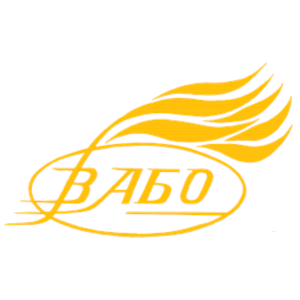VISUALIZATION AS THE MOST IMPORTANT COMPONENT OF STREET ART IN TEACHING FOREIGN LANGUAGES TO STUDENTS OF HIGHER EDUCATION INSTITUTIONS
DOI:
https://doi.org/10.32782/academ-ped.psyh-2024-1.23Keywords:
foreign languages, contemporary art, Street Art, visualization, discourse, methods of teachingAbstract
The research purpose is to analyze the use of Street Art samples and their most important component – visualization – in the process of teaching foreign languages to students of higher education institutions. The research methodology is based on modern scientific concepts developed within the framework of discursive-theoretical modeling and cognitive-psychological approaches. The methods of information analysis, synthesis, interpretation, linguistic analysis, systematization and generalization of the material have been used. The scientific novelty is that using the perception of linguistic space created by Street Art can be used to initiate a discursive discussion of meanings when teaching foreign languages. Samples of Street Art are distinguished by their relevance, expressiveness, brevity, and provocative nature. Involving Street Art in the learning process can include such stages as getting acquainted with the artist's work, understanding the idea and conveying this idea in a foreign language. You can also describe images, discuss and compare associations related to Street Art sample, create your own story or artwork and give it a name, discuss ideas, write comments. Visualization with the help of Street Art works allows to intensify learning and cognitive activity, to integrate new knowledge, to develop critical thinking and ability to draw logical conclusions, to increase the level of interest in the material studied, creativity. Conclusions. Tasks related to the use of Street Art samples in the process of teaching foreign languages contribute to the formation and development of value orientations, open up new opportunities for creative development, enable realization of the communicative function, expand active and passive vocabulary, and form socio-cultural competencies.
References
Геркерова О.М. Стрит-арт як культурно-освітній проєкт. Науковий вісник Південноукраїнського національного педагогічного університету імені К.Д. Ушинського. 2021. Вип. 4(137). С. 7–15. DOI: https://doi.org/10.24195/2617-6688-2021-4-1.
Пандирєва Є. Мистецтво рукотворного графічного напису у візуальному середовищі міста: морфологічний аспект.
KELM (Knowledge, Education, Law, Management). 2022. №2 (46). С. 86–94. DOI: https://doi.org/10.51647/kelm.2022.2.13.
Пометун О., Пироженко Л. Сучасний урок: інтерактивні технології навчання. Київ : А.С.К., 2004. 191 с.
Тютюнник А.В. Технології візуалізації у світових дослідженнях. Відкрите освітнє е-середовище сучасного університету. 2020. № 9. С. 161–168. DOI: https://doi.org/10.28925/2414-0325.2020.9.13.
Blanché U. Something to s(pr)ay: Der Street Artivist BANKSY. Eine kunstwissenschaftliche Untersuchung. Marburg: Tectum, 2010.
Hallet W. Die komplexe Kompetenzaufgabe. Fremdsprachige Diskursfähigkeit als kulturelle Teilhabe und Unterrichtspraxis. In: Hallet, Wolfgang (Hrsg.), Kompetenzaufgaben im Englischunterricht. Seelze: Kallmeyer, 2012. 8–19.
Hencz A. Street Art: history of the art movement and the artists that turned cities into open sky museums. Artland Magazine. 2022. URL: https://magazine.artland.com/street-art/
Herring S.C. New frontiers in interactive multimodal communication. In A. Georgopoulou & T. Spilloti (Eds.), The Routledge handbook of language and digital communication. London : Routledge 2015. P. 398–402. URL: http://info.ils.indiana.edu/~herring/hldc.pdf
Jakob K. Street Art. Kreativer Aufstand einer Zeichenkultur im urbanen Zwischenraum. In: Geschke, Sandra Maria (Hrsg.), Straße als kultureller Aktionsraum. Interdisziplinäre Betrachtungen des Straßenraumes an der Schnittstelle zwischen Theorie und Praxis. Wiesbaden: Verlag für Sozialwissenschaften, 2009. 73–97.
Krause D., Heinicke C. Street Art. Die Stadt als Spielplatz. Berlin: Tilsner, 2006.
Legutke M.K. Kommunikative Kompetenz und Diskursfähigkeit. In: Hallet, Wolfgang & Königs, Frank (Hrsg.), Handbuch Fremdsprachendidaktik. Seelze: Kallmeyer, 2010. 70–75.
Lunn M. Street Art Uncut. London: Craftsman House, 2006.
Reinecke J. Street-Art. Eine Subkultur zwischen Kunst und Kommerz. Bielefeld. Transcript Verlag, 2012.
Schroer M. Räume, Orte, Grenzen. Auf dem Weg zu einer Soziologie des Raums. Frankfurt/M.: Suhrkamp, 2012.
Schützeichel R. Soziologische Kommunikationstheorien. Konstanz: UVK Verlag, 2004.
Street Art vs. Graffiti: What’s The Difference? Dictionary.com. September 14, 2020. URL: https://www.dictionary.com/e/street-art-vs-graffiti/








